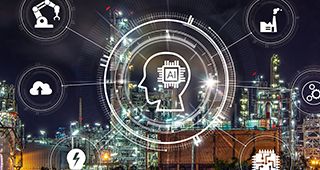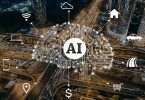Recent breakthroughs in artificial intelligence (AI) have led to significant improvements in the capabilities of AI systems. This includes preeminent AI capabilities such as generative AI (Gen AI), anchored on large language models (LLMs) such as GPT-4, which can generate human-like conversational text, understand complex queries, and assist with a wide range of tasks.
AI and Gen AI have diverse applications across industries from healthcare and finance to entertainment and education. They can automate repetitive tasks, provide insights from large datasets, enhance customer service, and even create art and music. Organizations across industries see AI as a path to gain a competitive edge in the global market.
Since AI can optimize operations, reduce costs, and create new products and services, it’s fast becoming a major driver of economic growth and innovation. It comes as no surprise that venture capital firms are pouring money into AI startups, while governments and businesses are investing heavily in AI research and development at the same time.
Analysts expect AI to contribute significantly to global GDP, with PwC1 estimating that AI could add up to $15.7 trillion to the global economy by 2030. In its 2023 report, “The economic potential of generative AI: The next productivity frontier,” McKinsey Digital estimated the economic potential of generative AI alone to be between $2.6 trillion to $4.4 trillion annually. These estimates expect an increase in investment in and adoption of AI technologies across various industries, driven by advancements in AI capabilities and the expanding range of AI applications.
As with every new technology, AI has its challenges. These include ethical and privacy concerns, job displacement, and developing appropriate regulations and governance frameworks to ensure that AI is safe, transparent, and responsible to use. This is important because AI applications face diverse regulations across industries—data privacy in healthcare, credit scoring in finance, and passenger and pedestrian safety with autonomous vehicles—to name a few.
Not everyone agrees with the hype, though. A recent report by Goldman Sachs, aptly titled “GenAI: Too much spend, too little benefit,” was significantly more circumspect about the potential of AI, with some of the contributors seeing only limited economic upside from AI over the next decade and arguing that the technology isn’t designed to solve the complex problems that would justify its costs.
Skeptics point to the high cost to deploy and run AI applications and chip and power shortages that would constrain AI growth, not to mention low rates of AI adoption by companies, fear over AI-driven cybercrime, potential harmful impact to the environment, and the often-expressed risk considerations spanning ethics, bias, and data inaccuracy. Further, some pundits are finding eerily similar trends between the AI hype and the dot-com bubble in the early 2000s.
Understandably, we will continue to see considerable volatility in AI technology in the next few years as AI companies seek to offer solutions that balance power and cost to improve business adoption. This contextual overlay is relevant to the question of whether AI is a digital evolution or cultural revolution or both (or perhaps neither). We will address this next.
AI—A digital evolution or cultural revolution?
Given that we are all so early in our AI journey, the concerns mentioned above, and how rapidly we are trying to move forward—AI has the potential to become a cultural revolution, not just a digital evolution.
When is a tech capability a digital evolution?
A new tech capability typically involves innovative approaches or advancements in technology. For any tech capability to be considered a digital evolution, it needs to have a significant impact on businesses. Specifically, the tech needs to be transformational, accessible, offer economic gains, and connect with existing technology; it must be all these things while still evolving.
When is a tech capability a cultural revolution?
But technology also becomes a cultural revolution when it profoundly changes societal norms, behaviors, and interactions, in addition to transforming business practices and technological landscapes. This is classified by affecting daily lives and human behavior. AI allows for economic and social equity and impacts education, healthcare, and regulation.
To illustrate, mobile technology is both a digital evolution and a cultural revolution. AI is on a solid trajectory to also become a foundational element of digital evolution. Its contributions to specific industries such as transportation, finance, and healthcare are impressive. Further, generative AI is showing promise as an enabler of pervasive automation, and in certain industries, it shows the potential to have a transformational impact.
However, AI is not yet as mature or widespread due to its ongoing development, complex integration requirements, regulatory and ethical challenges, and the specialized nature of many current AI applications. Additionally, the current high cost of implementing AI is formidable, which limits its adoption. As AI continues to evolve and address these hurdles, it will likely reach a similar level of ubiquity and transformative impact as mobile technology.
AI is also undoubtedly shaping culture in significant ways, particularly through its integration into various digital platforms and services, significantly improving customer service via chatbots, not to mention its tremendous potential in learning and education, health and wellness, and other socially and culturally impactful areas. However, it has not yet achieved the same level of cultural revolution as mobile technology due to its less visible presence, slower adoption pace, accessibility issues, and complex ethical challenges.
As AI continues to become more integrated into everyday life, its cultural impact is likely to grow. Time will tell, and in two to three years, we will more than likely have a considerably different picture of AI’s readiness as a foundational cornerstone of digital evolution and a cultural revolution.
At BMC, we continue to push the boundaries to leverage and learn from AI—and generative AI—through research, our customers, and our development. All drive business value, faster than humanly possible.
References:
- PWC: PwC’s Global Artificial Intelligence Study: Exploiting the AI Revolution (2017)







